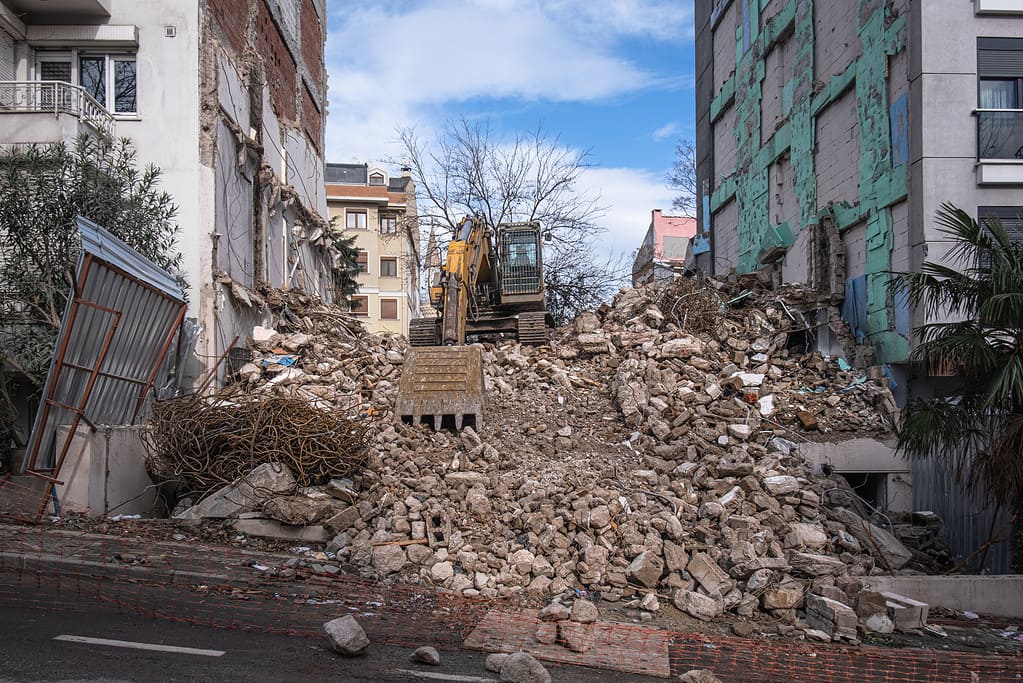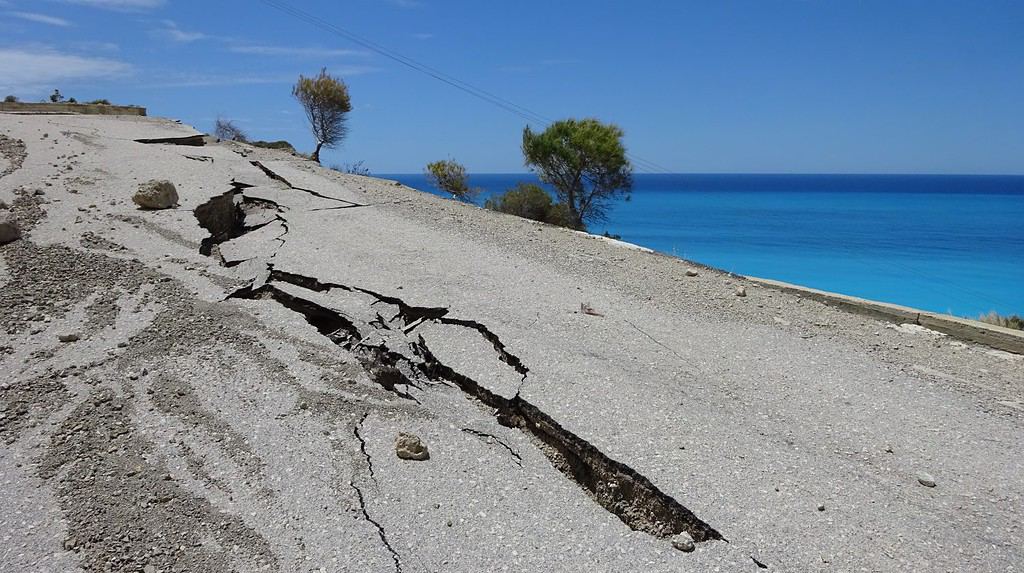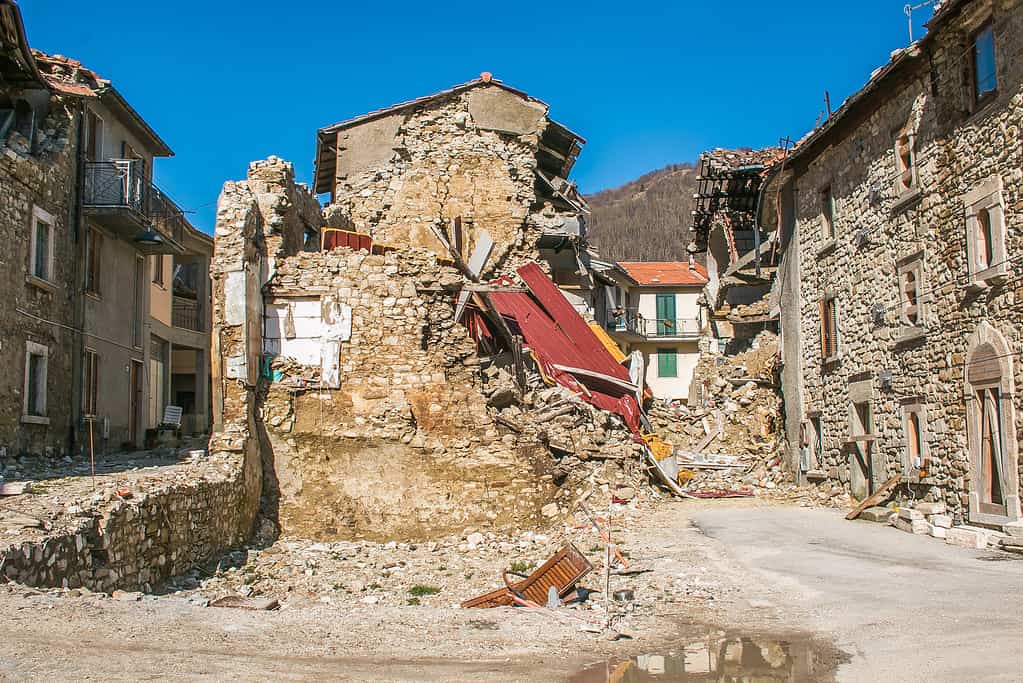When people read the news, or watch the news on television, there are instances where the news anchor starts reporting on a breaking news story about an earthquake in Japan. Japan is one of the most earthquake-prone countries in the world. Other countries experience earthquakes like the United States, Mexico, or Chile. When it comes to Europe however, there aren’t a lot of news-related articles on earthquakes. But earthquakes do happen in Europe. Let’s take a look at the six most earthquake-prone countries in Europe. We’ll go over each of the countries and talk about when they experienced their last earthquake and how vulnerable they are to earthquakes.
Turkey

Turkey is in an active seismic zone and thus, experiences many earthquakes per year.
©mustafaoncul/iStock via Getty Images
Nearly the entire country of Turkey is located on a fault line, which means that it is prone to earthquakes much more than other surrounding countries. Turkey gets hit with thousands of earthquakes every year. Many of them are small and hardly felt, but others can be quite severe. The strongest and deadliest earthquake to hit Turkey in recent history happened in February 2023. It was a 7.8 magnitude earthquake where more than 50,000 people were killed.
Greece

Greece experiences thousands of earthquakes every year.
©Ginny Farrell/Shutterstock.com
Just like the rest of the Balkan countries, Greece lies right in the boundary between two tectonic plates and thus, experiences many earthquakes. In fact, Greece ranks sixth in the world for the amount of earthquakes it experiences. On average, earthquakes hit Greece every 2-3 days, however, they are usually small, and people rarely, if ever, feel them. The strongest earthquake to hit Greece happened in 1956 with a 7.8 magnitude quake. However, one of the deadliest in recent history happened in September 1999 when a 6.0 magnitude quake hit Athens. It killed 143 people and injured about 1,600.
Albania

The country of Albania is situated on the convergent boundary between the Eurasian and African plates.
©Cristian Storto/Shutterstock.com
Albania is a Balkan country and because of where the country is located it also gets hit with earthquakes more often than its European counterparts. On average, Albania gets hit with around 114 earthquakes per year, which amounts to one every three days. The largest recent earthquake happened in November 2019 when a 6.4 magnitude earthquake hit northwestern Albania. About 3,000 people were injured and 51 people died. In 2023, Albania experienced 1,059 earthquakes of all magnitudes.
Italy

Italy’s strongest record in recent years happened in November 1980 with a 6.9 earthquake hitting Campania.
©Buffy1982/iStock via Getty Images
Because Italy is situated between the Eurasian and African plates, the Italian peninsula is hit with earthquakes more frequently than its other European counterparts. On average, Italy is hit with about 84 earthquakes annually, which comes out to around seven every month. In 2023, however, according to the National Institute of Geophysics and Volcanology, Italy was hit with a record 16,307 earthquakes in 2023. That amounted to about 44 earthquakes each day. The deadliest earthquake to ever hit Italy was in December 1908 when a 7.1 magnitude earthquake hit Sicily and Calabria. Around 95,000 people were killed.
Romania

Romania is located on a constructive plate boundary and thus gets many yearly earthquakes.
©Cristi Dangeorge/Shutterstock.com
Because Romania is located on a constructive plate boundary, the country experiences many earthquakes. Usually, Romania experiences one earthquake every 20 days. In the past 10 years, there have been over 150 earthquakes that have struck in or near Romania, with 2023 being one of the most earthquake-prone years. The deadliest earthquake that Romania ever experienced was in 1977. The Vrancea earthquake happened on March 4, 1977, and ended up being a 7.5 on the Richter Scale. It killed 1,578 people. However, a November 1940 earthquake was the strongest to hit Romania with a magnitude of 7.7.
Iceland

Iceland gets tens of thousands of earthquakes every year.
©WhitcombeRD/iStock via Getty Images
The earthquakes that Iceland experiences are usually not as strong as the ones in other places in Europe. However, Iceland is not immune to earthquakes. The reason for this is that Iceland is located near a constructive plate boundary. On average, Iceland experiences a whopping 500 earthquakes per week. that amounts to over 26,000 earthquakes in a calendar year. The largest earthquake that Iceland experienced happened in 1784. Scientists believe that the earthquake was around a 7.1 on the Richter Scale. In recent years, there was an earthquake that hit southern Iceland in 2008 that was a 6.5 on the Richter Scale.
Conclusion
And there you have it, these are the six most earthquake-prone countries in Europe. Mainly located in the Balkans region of Europe, they are more vulnerable than other countries to getting hit by strong earthquakes. Of course, Iceland is also vulnerable to earthquakes because of where on the globe they are located. If you happen to be in these countries when an earthquake hits, follow the guidelines that officials have outlined, as well as what you learned to do when you were younger.
The photo featured at the top of this post is © PeterHermesFurian/iStock via Getty Images
Thank you for reading! Have some feedback for us? Contact the AZ Animals editorial team.







